

California is the land of golden sunshine, ocean shores, and carefree entertainment. However, beyond the coastline, we can discover a different, more unique side of the state.
Beyond the Rocky Mountains and just outside Los Angeles, lies a vast, little-known natural paradise, almost entirely made up of protected lands. Surprisingly, California’s national parks cover a significant portion of the state, and due to its diverse geological features, the state spans multiple climate zones, creating an astonishingly varied landscape. Exploring these breathtaking regions means experiencing everything from scorching deserts to ski resorts, rugged mountain ridges to golden sandy beaches—offering an incredibly diverse adventure. Of course, visiting all of California’s national parks in one trip is nearly impossible, so if we truly want to immerse ourselves in the state’s natural wonders, we must choose from an overwhelming selection. In the following, we’ll highlight some of the most extraordinary natural marvels, offering a glimpse into a few must-visit national parks that are well worth the journey—even from the other side of the world.
Joshua Tree: A Window to the Dazzling Sky
Just a little over 100 kilometers from Los Angeles, Joshua Tree National Park is a captivating destination. The park takes its name from the unique Joshua tree, a plant that defines the landscape. However, the true spectacle here isn’t the living environment—it’s the dramatic, otherworldly terrain that steals the show.
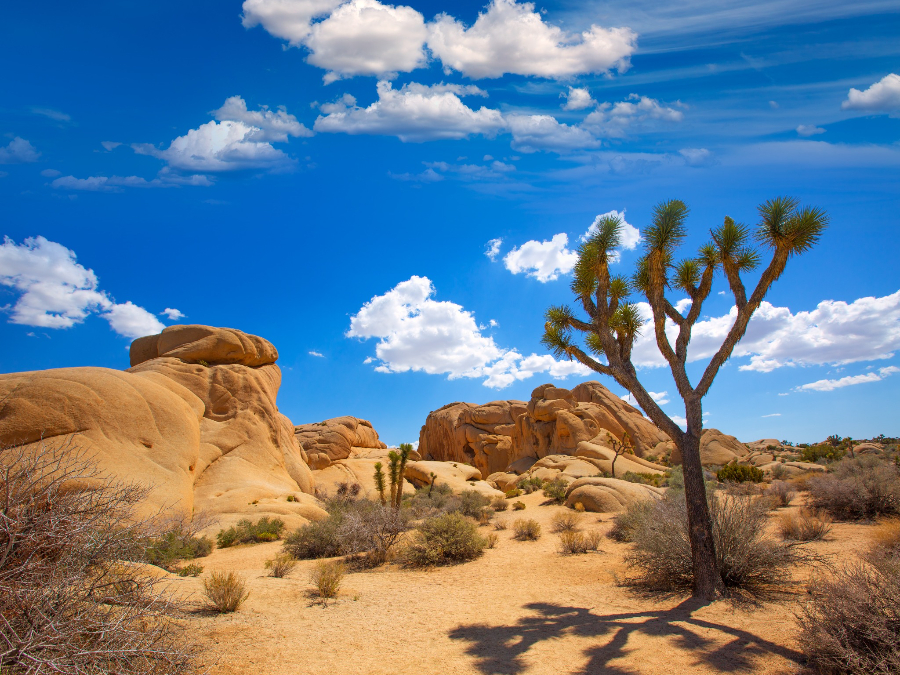
This is a land of stunning rock formations, sculpted into the most unexpected and breathtaking shapes. Under the bright Southern California sun, these shimmering boulders attract not only curious visitors but also professional and amateur rock climbers, some of whom embark on multi-day challenges to test their skills. But Joshua Tree’s other great attraction only reveals itself after sunset—when the true stars of the night sky emerge. Thanks to the region’s unique climate and minimal light pollution, this park offers one of the clearest, most dazzling views of the stars in the world. The experience becomes even more magical during meteor showers, which peak between October and November.
In the Footsteps of Volcanoes
California has its own volcanic region, home to the largest volcanic dome in the world. In the 20th century, only two volcanic eruptions occurred in the continental United States—one of them in 1915, at the site that is now Lassen Volcanic National Park.

A century after the eruption, it's fascinating to observe the lingering scars of destruction, while also marveling at nature’s incredible ability to heal. Lassen Volcanic National Park offers hundreds of kilometers of hiking trails, where visitors can experience this transformation firsthand—from steaming sulfur vents and geothermal hot springs to vast pine forests. As we explore the park, we can almost feel the heat beneath our feet, making it all the more astonishing how much snow blankets the region in winter, turning it into a magical wonderland for winter sports enthusiasts.
Land of Giants
Entering Sequoia and Kings Canyon National Park feels like stepping into another dimension of time and scale. It’s no exaggeration—the giant sequoias here surpass humans not only in size but also in age. One of the most famous, General Sherman, weighs over 2,000 tons, and it's far from the only colossal tree in this breathtaking national park.
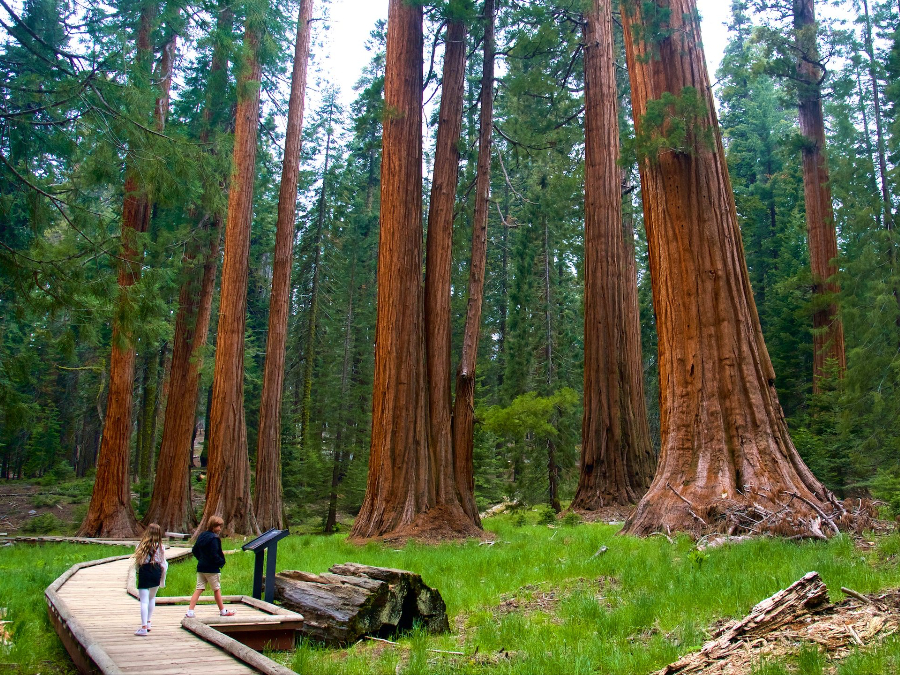
Five of the world’s ten largest trees can be found here, along with some of the oldest living giants on Earth. It’s not a typo—some sequoias in Sequoia and Kings Canyon National Park are over 3,000 years old. But this place is more than just a showcase of record-breaking trees—its breathtaking landscapes captivate visitors just as much. Vast forests are interwoven with stunning lakes and crystal-clear rivers, creating a scene of pure natural beauty.
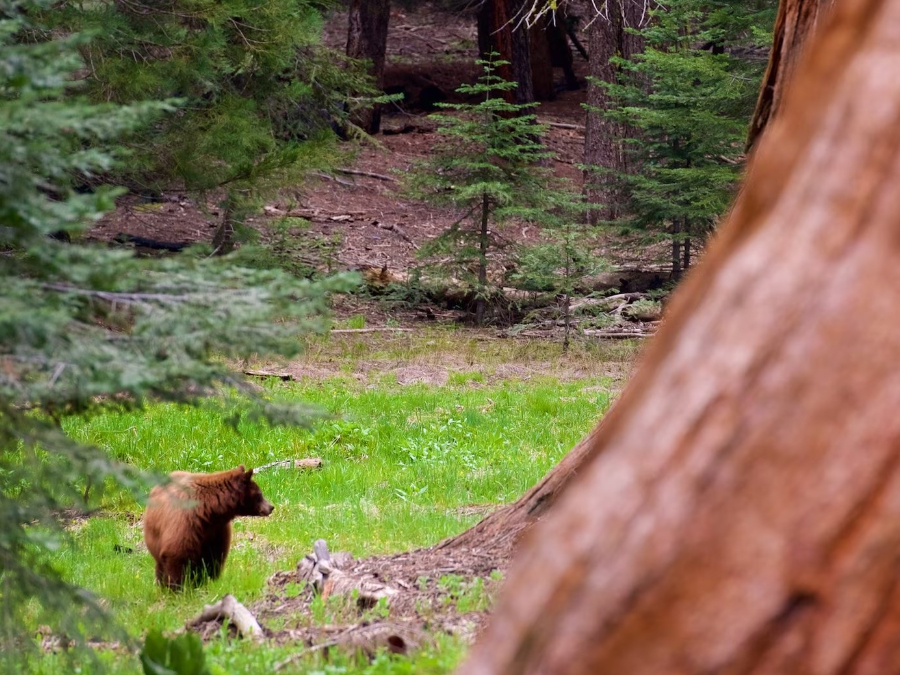
Death Valley
Death Valley earned its name during the California Gold Rush, when a lost caravan nearly perished in its unforgiving terrain. Today, it remains one of the hottest places on Earth, where summer temperatures often exceed 50°C (122°F). Visitors to Death Valley National Park no longer face life-threatening danger—as long as they follow safety guidelines. In fact, the extreme conditions are embraced to such an extent that every July, the valley hosts a 200-kilometer ultramarathon in the sweltering heat.
However, a few precautions are essential to explore such an unforgiving place:
For a more comfortable experience, consider visiting in the fall or spring, when the desert’s harsh beauty can be enjoyed without the extreme temperatures.

The second-largest national park in the USA—after those in Alaska—is perhaps the most famous. Over millions of years, the harsh weather conditions and unique microclimate have created some of the most extraordinary natural formations. One such place is the Devil’s Golf Course, a vast, sparkling, fractured salt pan made up of rock-hard salt crystals—where, according to its name, only the devil could play golf. In another part of the park, especially at sunrise, the 20-30-meter-high sand dunes are a stunning sight. Additionally, visitors can marvel at a magnificent, 200-meter-deep volcanic crater. Exploring the park, it’s remarkable to see just how diverse the desert landscape is, in both shapes and colors. Its diversity can even be measured in elevation—right next to Badwater, the lowest point in the United States at 86 meters below sea level, stands the towering Dante’s Peak at an elevation of 1,700 meters.
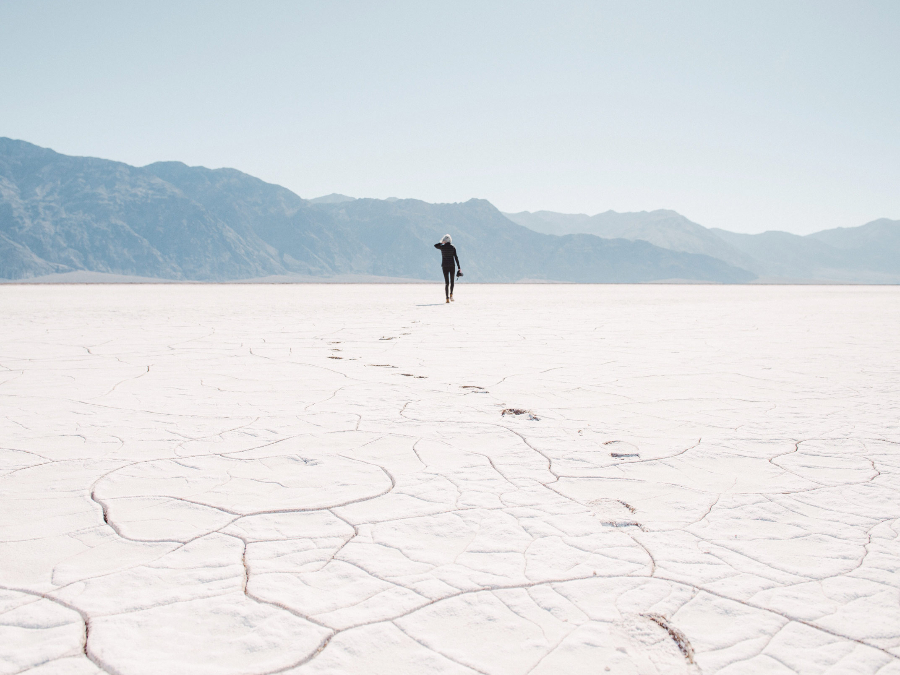
Given the vast size of Death Valley, exploring it in just one day is challenging—and not recommended. Visitors looking to extend their stay will find that staying overnight in the valley is the best option. Fortunately, there's now a luxurious oasis in the heart of the desert, offering comfort and all the necessary amenities amidst this extreme landscape.
Oasis in the Desert
In the late 1920s, the owners of a borax mining company built a luxury hotel in the heart of Death Valley, offering unprecedented comfort for its time in the middle of the desert. This oasis quickly became a favorite retreat for celebrities like Clark Gable and Ronald Reagan, and during the filming of Star Wars, George Lucas even made it his temporary home. Recently, the resort underwent a $100 million renovation, and today, it welcomes visitors once again under the name The Oasis at Death Valley—a timeless retreat in one of the world’s most extreme landscapes.
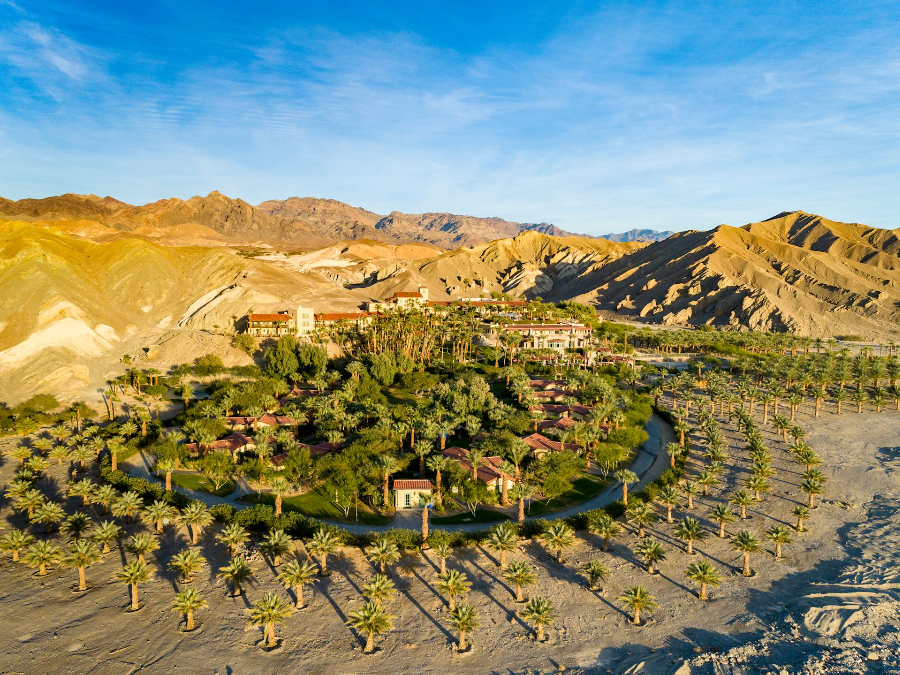
This Four Diamond-rated hotel offers exceptional services in a one-of-a-kind setting, making it the perfect retreat for visitors exploring Death Valley. The Oasis consists of two distinct areas: the Ranch at Death Valley and The Inn at Death Valley. The Ranch is a 224-room, Western-style resort with a small-town atmosphere, featuring a beautiful park, swimming pool, golf course, horseback riding, and even a bar reminiscent of an Old West saloon.
The Inn, on the other hand, is a luxurious desert hideaway, designed for those seeking absolute comfort and elegance. At the heart of The Inn, a magnificent fountain serves as a fitting symbol—a constant flow of crystal-clear water in the middle of Death Valley. The hotel has been beautifully renovated, offering everything one could dream of in such an extreme location: lush gardens, pools, a wellness center, and exquisitely designed rooms that redefine comfort.
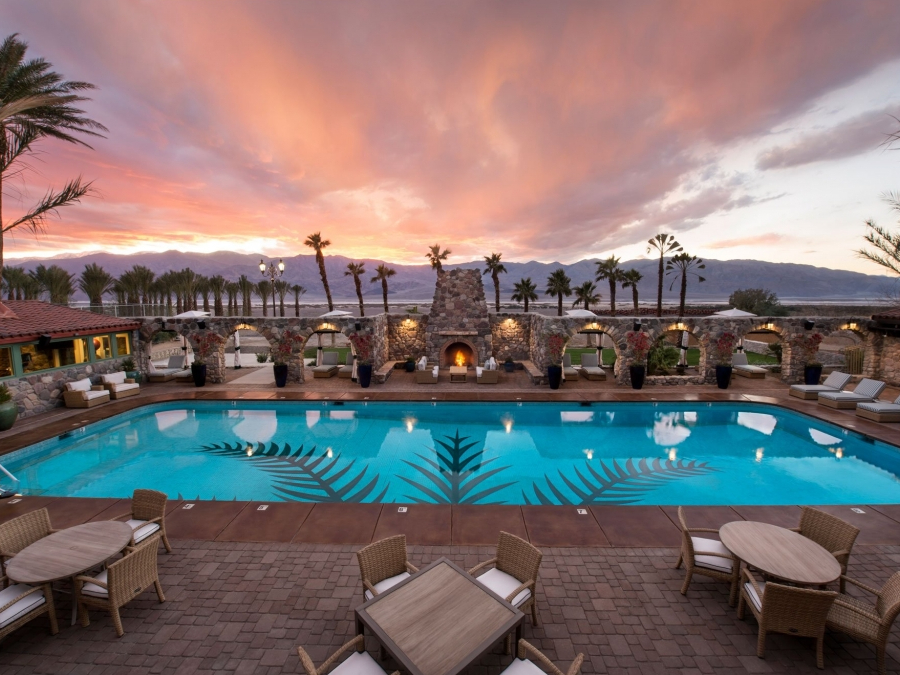
For the ultimate relaxation, the resort offers a variety of sports and activities, from fitness and tennis to golf. Guests can explore the breathtaking surroundings with the help of expert guides—whether on a jeep tour, horseback ride, or scenic hike. There is no better place to admire Death Valley’s beauty than from its very heart, where The Oasis stands. And there is no better way to take it all in than in absolute comfort—beneath swaying palm trees, in a cool and serene setting, with a perfectly crafted cocktail in hand, watching the sun set behind the mountains that encircle Death Valley.